by Lorri | Jan 22, 2014 | UnCorked
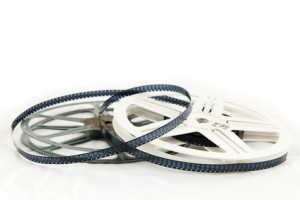 As you would assume, wine is everywhere in my life, in writing, tasting, reading – even movie watching. It has been exciting over the last decade to see more and more movies not just with wine in the background, but with the world of wine being a major theme. I admit to not being a movie critic, but these are a couple of my favorites to consider adding to your movie library. Of course watching with a great glass of wine in hand makes the experience even more enjoyable.
As you would assume, wine is everywhere in my life, in writing, tasting, reading – even movie watching. It has been exciting over the last decade to see more and more movies not just with wine in the background, but with the world of wine being a major theme. I admit to not being a movie critic, but these are a couple of my favorites to consider adding to your movie library. Of course watching with a great glass of wine in hand makes the experience even more enjoyable.
Bottle Shock (2008) may be my favorite wine movie of all time. Having the infamous 1976 Judgment of Paris made into a movie should make any American wine consumer proud. The story is of the early days of California wine making, when most people didn’t have any idea of the world-class wine California was producing.
It all changed when a Paris wine retailer, alongside Britain’s Steven Spurrier, organized a unique and original blind wine tasting: California versus France. California wines were brought against not only historic wine greats, but also the discerning taste of the world’s most elite palates. The blind tasting, not revealing producers, gave California an overall rating of superior when the winners were announced: a 1973 Stag’s Leap Cabernet Sauvignon and a 1973 Chateau Montelena Chardonnay.
You can only imagine the reaction across the globe from the outcome of this competition. The movie focuses on the story of Chateau Montelena’s amazing beginnings with the experiences of a small production winery in the 1970s struggling with business, a pretentious global industry, a bottle shock adventure and, as with all great movies, layers of evolving relationships.
Somm (2012) is a more-recent release that received mixed reviews from wine critics, but it is one of my favorites. The documentary follows four men who practically put their lives on hold to study for the Master Sommelier Exam.
I’ve been asked many times to explain the complicated process of studying for Master of Wine (MW) or Master Sommelier (MS). From my years of studying through the Diploma of Wines and Spirits, a prerequisite for the MW program, this movie hits home, down to my many maps taped to mirrors, flashcards being read at stop lights and the support of family and study group peers.
If anyone is interested in better understanding the commitments of these types of programs, this movie is a front-row seat to the experience. The movie illustrates the dedication and competitiveness on level with medical school or law school, necessary to become a master sommelier. At this level about the only thing separating the students is wine.
This is not a movie to watch with anyone who is not equally a wine geek. But it does offer a rare glimpse into the world of wine and service credentials. My main disappointment in the movie was that no women were featured on the path to the exams.
by Lorri | Jan 15, 2014 | UnCorked
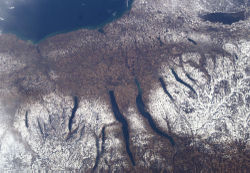 Many wine lovers tend to stick within their comfort zones, flocking to well-known vineyards in California, but the United States has many regions on the rise worth exploring.
Many wine lovers tend to stick within their comfort zones, flocking to well-known vineyards in California, but the United States has many regions on the rise worth exploring.
Finger Lakes in west-central upstate New York is such a region. Jim Trezise, president of the New York Wine and Grape Foundation wrote it best: “This is a 50-year overnight success.”
The region’s popularity got a jump-start when its wines were served at President Barack Obama’s 2013 inaugural luncheon, as well as receiving rave reviews in Wine Spectator. Early last year the magazine had a tasting and analysis of more than 325 Finger Lake wines.The results were a lot to brag about, with more than two thirds receiving 85 points or higher on the Wine Spectators 100-point scale and 28 wineries awarded the prestigious over-90-point rating.
The Finger Lakes wine industry built its foundation on native grapes like the Concord. These were ideal candidates for thriving in the region’s cold winters and cool summers. Most grapes were used for jelly and juice production and only a small amount made it into the wine bottle. The wines were generally sweet and were sold locally or in the tasting rooms. But over the last decade, vineyards have turned to growing varietals more consumers recognize and critics review. Many are the classic grape varietals like pinot noir and cabernet franc or whites that like cool weather like Riesling, gewurztraminer and chardonnay.
If you haven’t tasted a New York wine you’re in for a treat as more wines from this area become available in Arkansas.
THE VALUE
- 2011 Red Tail Ridge Winery Chardonnay, New York (about $10 retail)
THE SPLURGE
- 2011 Red Tail Ridge Winery Dry Riesling, New York (about $17 retail)
by Lorri | Jan 8, 2014 | UnCorked
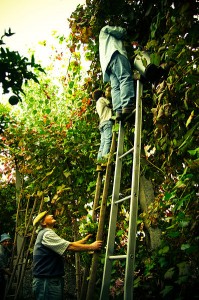 Once known only for its Port and notorious Mateus Rose production, today Portugal is changing its image with its own signature grapes. Portugal’s bottled wine exports to the United States topped the 1 million-case mark last year, an increase of more than 30 percent in recent years.
Once known only for its Port and notorious Mateus Rose production, today Portugal is changing its image with its own signature grapes. Portugal’s bottled wine exports to the United States topped the 1 million-case mark last year, an increase of more than 30 percent in recent years.
While many winemakers around the world focused on planting international varietals of cabernet sauvignon, merlot and chardonnay, Portugal stayed true to its roots. Literally. It’s betting its traditional wine making reputation on the powerful indigenous Touriga Nacional and refreshing, distinctive Vinho Verde.
The Touriga Nacional is considered the finest nonsparkling red wine of the Dao and Douro regions, with very little planted outside of Portugal. It’s one of the lead grapes in the blending of Port wine. In the past these wines were made in very concentrated, high-alcohol styles (very similar to a concentrated full-bodied Australian Shiraz). Today many winemakers are moving in the opposite direction with lighter, lower alcohol content, less extraction and more acidity from grapes being grown at higher altitudes.
Because the Touriga Nacional was regarded as only a blending partner for Port, varietal plantings of this grape are relatively new by vine standards. Most vineyards have small plantings and vines as young as 8 to 10 years. Because of the scarcity of old vines, we are still about 10 years away from experiencing the full potential of this indigenous grape.
Vinho Verde is Portugal’s fresh, lively, zingy, zesty and above all bargain-priced wine. These wines are traditionally made from an unfamiliar listing of local grapes like azal, loureiro, arinto and trajadura. Vinho Verde is the largest of the regulated wine regions, stretching from the Spanish border to south of Oporto on the Atlantic coast.
Over the past few years some winemakers are adding albarinho (more familiar to Americans by its Spanish name, albarino) to the mix. With growing familiarity of this wine, more and more consumers are passing over the known white varietals on the retail shelf for Vinho Verde’s refreshing taste and price.
THE VALUE
- 2011 Broadbent Vinho Verde, Portugal (about $9 retail)
THE SPLURGE
- 2010 Cape Roca Fisherman Red (Touriga Nacional blend), Portugal (about $15 retail)
by Lorri | Dec 25, 2013 | UnCorked
 “I drink [Champagne] when I am happy and when I am sad. Sometimes I drink it when I’m alone. When I have company I consider it obligatory. I trifle with it if I’m not hungry and drink it when I am. Otherwise I never touch it unless I’m thirsty.” – Madame Bollinger
“I drink [Champagne] when I am happy and when I am sad. Sometimes I drink it when I’m alone. When I have company I consider it obligatory. I trifle with it if I’m not hungry and drink it when I am. Otherwise I never touch it unless I’m thirsty.” – Madame Bollinger
It may be its romantic history or more simply its splendid taste alluring wine drinkers around the world to raise their glasses at the stroke of midnight on New Year’s Eve. But for all its elegance, Champagne can be a confusing subject.
Champagne is made from a specific combination of grapes grown in France’s cool-climate vineyards. (By law only wine produced in the Champagne region of northeast France can be called Champagne.) Pinot noir gives structure, body and that delicate fruit character; chardonnay is the elegance behind the blend with floral and fruit components; and pinot meunier provides the dominant aspect to the fragrance you find in each glass. Many people ask why Champagne is not red because most of the grapes are red wine grapes. The grapes are pressed, letting the juice run out without skin contact, where color is obtained.
The complex process of producing sparkling wine is the main contributing factor when it comes to the cost of higher-quality bottles. The longer and slower the wine making process, the more expensive and complex the final wine style will be. If you add the bubbles quickly by artificial methods the result is a simple style, while adding them slowly, naturally and elaborately results in a more complex wine and higher price tag.
A Champagne that doesn’t have a specific year on the label is considered “nonvintage” (NV) and means it’s a mixture of grapes from several years. NV is about twothirds of all Champagne sold.
Vintage champagne is produced only in an exceptional year and declared by the producer. This wine is generally more expensive because of its low production and extra time in all areas of the wine making and cellaring process. Blanc de blanc is made from the chardonnay grape. Blanc de noirs are made from pinot noir and pinot meunier grapes. “Brut” is the driest option. “Extra dry” is actually less dry than brut and carries a small amount of sweetness on the palate. “Sec” is slightly sweet; “demi-sec” is moderately sweet; “doux” is sweet and rare.
Bonne annee.
- NV Piper Heidsieck Brut Cuvee, France (about $46 retail)
- 2004 Moet and Chandon Brut Imperial, France (about $95 retail)
by Lorri | Oct 2, 2013 | UnCorked
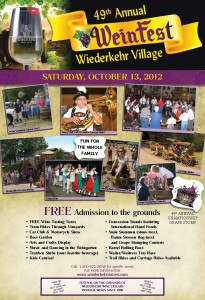 Arkansas winery Wiederkehr Wine Cellars is preparing its 50th annual Weinfest, Oct. 12, at Wiederkehr Village near Altus. Locals won’t be the only ones attending the historic event. As many as 3,500 have joined in the fun in the past.
Arkansas winery Wiederkehr Wine Cellars is preparing its 50th annual Weinfest, Oct. 12, at Wiederkehr Village near Altus. Locals won’t be the only ones attending the historic event. As many as 3,500 have joined in the fun in the past.
The long-running festival correlates to the long history of the Wiederkehr family in Altus. In 1880, Johann Andreas Wiederkerhr and his family emigrated from Switzerland. The family chose St. Mary’s Mountain near Altus as their home because of the area’s similarity – mountains (nestled in the Boston Mountains with the Ozarks to the north and the Ouachitas to the south) valleys and ridges – to the grape-growing climates in Europe’s wine regions. The first task was carving a large cellar into the hillside. This unique cellar is now listed on the National Register of Historic Places and is home to the Weinkeller Restaurant. The restaurant features an array of Swiss and European foods but is famous for its spaghetti and Back Hendel Vienna (a chicken dish).
The winery focuses on indigenous grape varieties quite rare in most of the United States. Many of the varieties are unfamiliar to wine drinkers simply because of the unique ability to grow these varieties in Arkansas. Cynthiana, Verdelet and Niagara are just a few making up their portfolio of white, red, sparkling and sweet wines.
If you’re looking to taste the local wines of Arkansas and have a fun family day too, the festival is the place to be. Don’t forget to stick around for the Championship Grape Stomp. There are no tickets or reservations needed because the evening banquet is first-come, first-served, and the entertainment and activities are free. For more information, visit Wiederkehrwines.com or call, (800) 622-9463.
THE VALUE
- 2011 Wiederkehr Wine Cellars Niagara, Arkansas (about $6 retail)
THE SPLURGE
- NV Wiederkehr Wine Cellars Port, Arkansas(about $50 retail)
by Lorri | Sep 25, 2013 | UnCorked
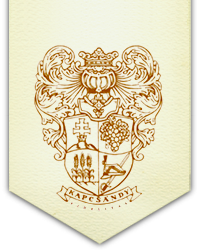 My most treasured bottles of wine are those about which I know the story behind the label.
My most treasured bottles of wine are those about which I know the story behind the label.
The Kapcsandy Family Winery is one of those stories, making the wines even more distinct and unique each time the cork is pulled. Arkansas was honored to host Lou Kapcsandy and his wife, Bobbie, recently. It was a delight to not only savor their wines but meet them on their first trip to the state. The story is that of an American dream fueled by hard work, determination and follow-through.
After fleeing Hungary after the 1956 Hungarian Revolution, Lou Kapcsandy came to the United States via Austria and eventually settled in the Seattle area. Kapcsandy’s varied career path – he’s been a professional soccer player, an airman in the U.S. Army and a professional football player and has a degree in chemical engineering – helped foster his love of wine.
It was a trip to Bordeaux in 1998 and a love of wine that redirected the couple’s path from wine lovers to wine makers. Over a lunch hosted by Leoville Las Cases patriarch Michel Delon they delved into a conversation about the many vineyards around the world boasting exceptional terroirs. Lou was convinced an American estate could rival them all. And so this challenge set them on a new destiny and planted the seedling of the Kapcsandy family dream.
Lou and Bobbie partnered with their son, Louis Jr., and, much to the family’s surprise, were able to purchase a 20-acre plot inNapa Valley that was once the former Beringer Estates Lane vineyard. The Beringer vines were destroyed in the California phylloxera devastation of the late 1990s. Making this plot home to the Kapcsandy vineyards meant a complete replanting with mostly cabernet sauvignon and merlot.
It was by no means an ordinary replanting but a veritable strategic plan for making the land the pinnacle of American terroir. Today it is apparent in the bottles of the Kapcsandy family wines. But just as his story started with opportunity, Lou Kapcsandy Sr. still says the best is yet to come.
- 2012 Kapcsandy Family Vineyards Rose, California (about $29 retail)
- 2009 Kapcsandy Family Vineyards Endre, California (about $60 retail)
 As you would assume, wine is everywhere in my life, in writing, tasting, reading – even movie watching. It has been exciting over the last decade to see more and more movies not just with wine in the background, but with the world of wine being a major theme. I admit to not being a movie critic, but these are a couple of my favorites to consider adding to your movie library. Of course watching with a great glass of wine in hand makes the experience even more enjoyable.
As you would assume, wine is everywhere in my life, in writing, tasting, reading – even movie watching. It has been exciting over the last decade to see more and more movies not just with wine in the background, but with the world of wine being a major theme. I admit to not being a movie critic, but these are a couple of my favorites to consider adding to your movie library. Of course watching with a great glass of wine in hand makes the experience even more enjoyable. Many wine lovers tend to stick within their comfort zones, flocking to well-known vineyards in California, but the United States has many regions on the rise worth exploring.
Many wine lovers tend to stick within their comfort zones, flocking to well-known vineyards in California, but the United States has many regions on the rise worth exploring.

 Arkansas winery Wiederkehr Wine Cellars is preparing its 50th annual Weinfest, Oct. 12, at Wiederkehr Village near Altus. Locals won’t be the only ones attending the historic event. As many as 3,500 have joined in the fun in the past.
Arkansas winery Wiederkehr Wine Cellars is preparing its 50th annual Weinfest, Oct. 12, at Wiederkehr Village near Altus. Locals won’t be the only ones attending the historic event. As many as 3,500 have joined in the fun in the past. My most treasured bottles of wine are those about which I know the story behind the label.
My most treasured bottles of wine are those about which I know the story behind the label.